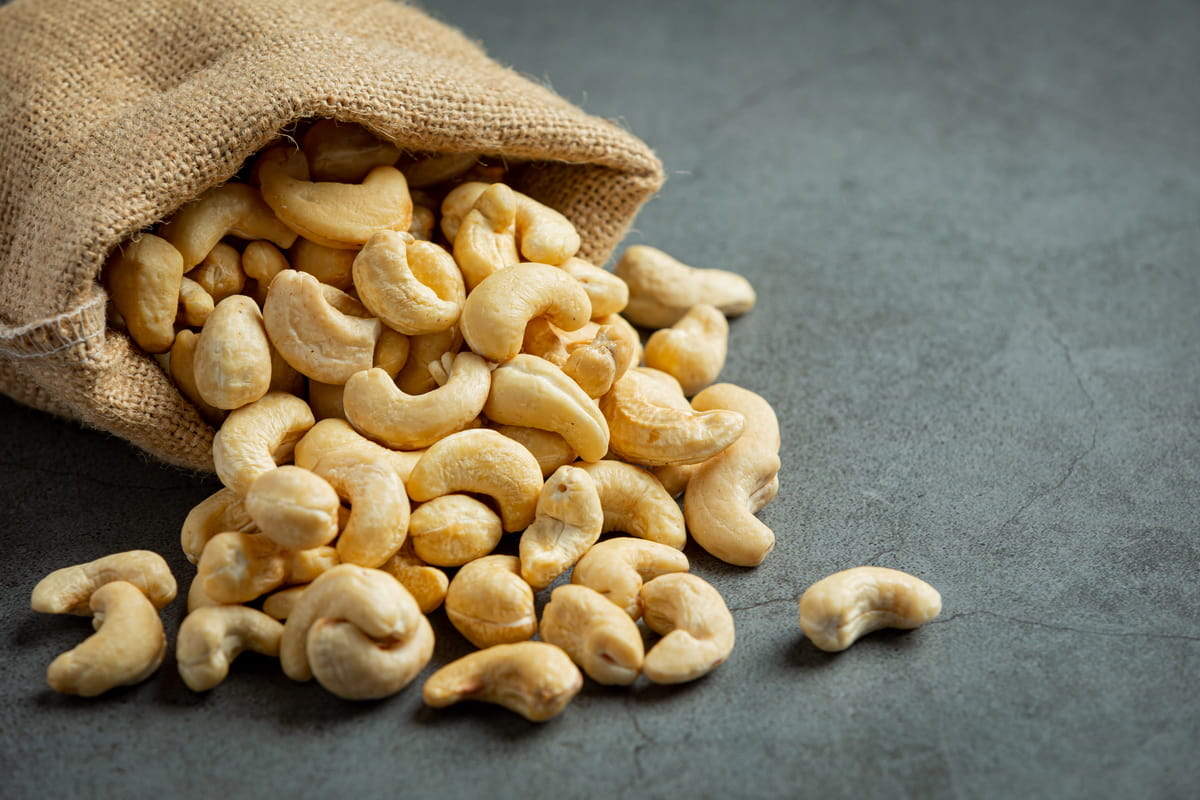When you think of cashews, a tasty snack might come to mind, but there’s so much more behind this curvy “nut.” Did you know that the cashew isn’t even a true nut, but a seed from a fruit called the cashew apple? Or that its name, “cashew,” is derived from the Portuguese word “caju”? Furthermore, these seeds have a protective layer containing a toxic substance, which is why they’re never sold in their raw, shell-on state.
Dive into these fun facts about cashews, and you’ll soon realize that there’s a world of intriguing history and biology behind every bite!
1. Origin Story: Cashews’ Ancient Roots
Brazil can proudly claim to be the birthplace of cashews. These nuts thrived in its Northeastern region until Portuguese explorers, struck by the cashew’s charm, took it to Indian shores in the 16th century. Given the right conditions, the cashew quickly made India its second home.
Fast-forward a few centuries, and by the 1960s, India was exporting these nuts on a massive scale. The name “cashew” itself traces back to its roots. Derived from the Portuguese “caju“, which is an adaptation of the Tupi word “acajú“, it’s a name with a story.
2. Two-for-One Deal: The Dual Delights of the Cashew Tree
While the cashew nut has become a household name, its counterpart, the cashew apple, remains relatively unsung. This fruit, attached to the nut, is a favorite in many tropical regions. Juicy, tangy, and with a dash of sweetness, it’s a refreshing tropical treat.
Yet, the marvel doesn’t end there. Richer in vitamin C than many citrus fruits, the cashew apple gets transformed into a plethora of products. From delectable juices and jams in Brazil to liquors in parts of Africa, it’s a two-in-one delight not to be missed.
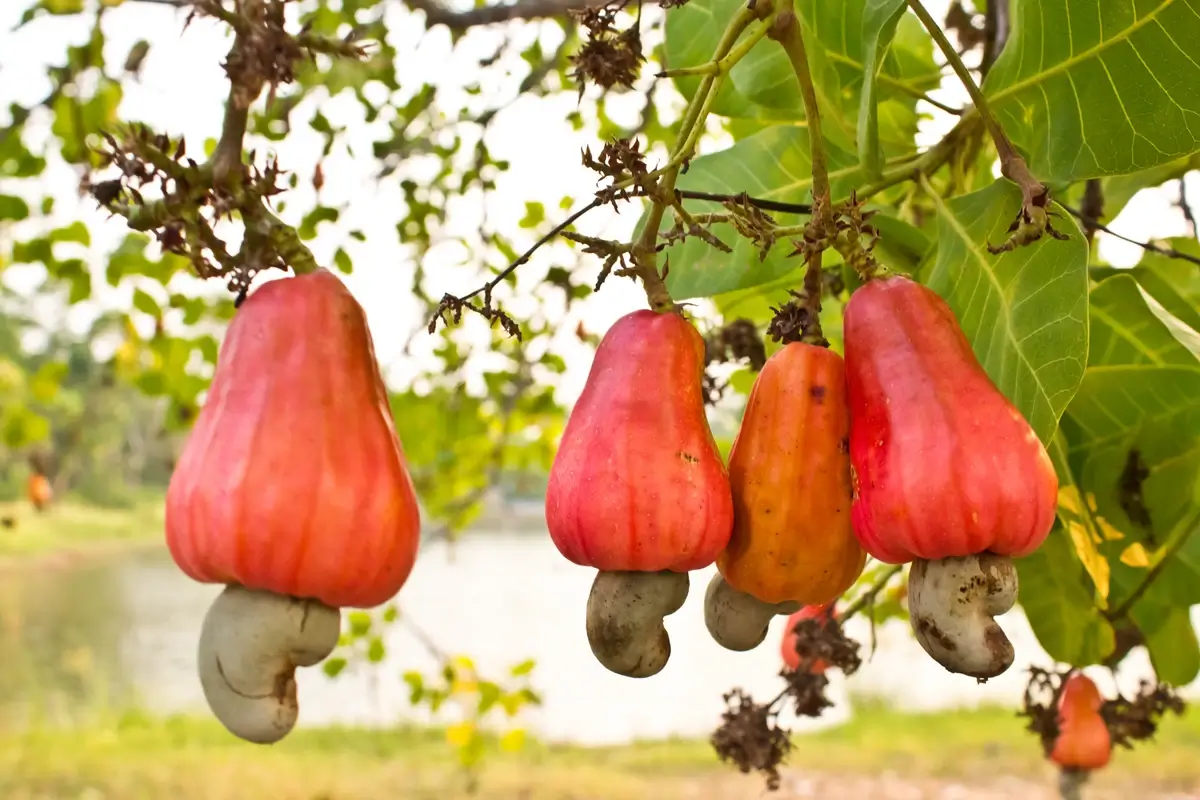
Image: fimgs.net
3. Beware of the Raw Deal: The Danger of Raw Cashews
When plucked fresh from the tree, cashews are anything but snack-ready. They’re enveloped in a shell that contains urushiol, a substance also found in poison ivy. Consumption at this stage? It can result in some not-so-pleasant reactions.
Here’s where science and culinary arts unite. The cashews available in stores undergo heat treatments to neutralize urushiol, ensuring they’re safe and delicious. A study from “Food and Chemical Toxicology” in 2003 highlighted the efficacy of this roasting process. So, the next time you munch on a cashew, remember the science that made it munch-worthy!
4. Cashew Capital: India’s Crown Jewel in Cashew Production
India doesn’t just embrace the cashew; it celebrates it! Holding the title of one of the world’s top cashew producers, this country has provinces dedicated to these crescent delights. Kerala, for one, can be dubbed as the ‘Cashew Capital’, contributing significantly to the national yield.
While Brazil gave the world cashews, India amplified their popularity. The meticulous cultivation techniques and processing methods here are globally renowned. From the sprawling orchards of Kerala to bustling markets in Goa, the scent of roasting cashews is unmistakably Indian.
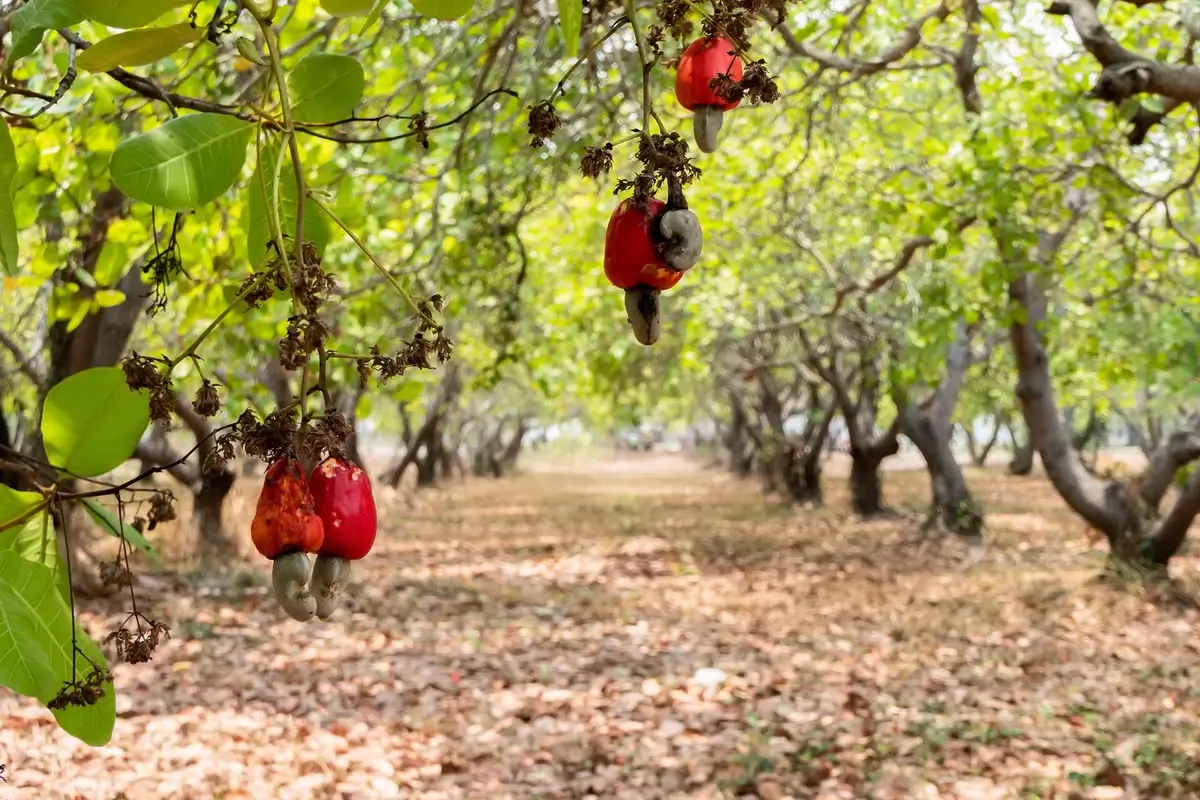
Image: skplantation.com
5. Cashew’s Sweet Sibling: The Edible Cashew Apple
Hidden in the shadow of its famous sibling, the cashew apple is an unsung hero. While it might not travel the world like the nut, in places where it’s known, it’s truly cherished. Boasting a unique flavor profile – a mix of sweet, tart, and a tad astringent – it’s an acquired taste.
In some regions, the cashew apple becomes the star of local delicacies. From being sun-dried in backyards of Brazilian homes to being turned into fruity syrups in African markets, this vibrant fruit refuses to stay unnoticed.
6. Not-So-Nutty Fact: Cashews Aren’t True Nuts!
Brace yourself for a surprising fact: cashews aren’t really nuts! In botanical terms, they’re seeds. When you eye a cashew tree, you’ll notice this “nut” is attached to the bottom of the cashew apple, making it an accessory fruit or a ‘drupe’.
Why does this matter? Well, it’s a fun piece of trivia that can win you some points at a dinner conversation. Plus, it’s a testament to the fascinating intricacies of nature. Looks can be deceiving, and the cashew is a prime example.
7. Shape Matters: The Irregular Marvel of Cashew’s Shape
There’s something undeniably captivating about the irregularly shaped cashew. Unlike the uniformity of almonds or peanuts, each cashew has its own unique curve, resembling a delicate crescent moon. But have you ever wondered why?
This distinct shape is a result of its growth pattern. As the cashew seed develops, it expands in an asymmetrical fashion, giving us the signature twist. This makes cashews not just a treat for the palate but also a visual delight. They’re a testament to nature’s artistry, where even in irregularity, there’s sheer perfection.
8. Weighty Matters: What’s in One Ounce of Cashews?
Ever contemplated the magic packed in just one ounce of cashews? A tiny portion, but it’s a powerhouse! Approximately 12 whole cashew nuts make up this weight, offering a blend of protein, essential fats, and a slew of vitamins and minerals.
There’s more! One ounce delivers around 5 grams of protein and a good dose of magnesium, beneficial for bone health and energy production. Not to mention, they’re a great source of antioxidants. So, the next time you grab that ounce, remember, you’re holding a nutritional goldmine.
9. Cashews in Cocktails: Brazil’s Cashew Apple Elixir
Brazil doesn’t just grow cashews; it celebrates them, especially in liquid form! The cashew apple, with its sweet and tart profile, lends itself beautifully to drinks. Ever heard of “cajuína“? This non-alcoholic drink from Brazil is a clear elixir made from cashew apples.
There’s an alcoholic counterpart too – “cachaça de caju“, where the essence of the cashew apple melds with the kick of cachaça, Brazil’s national spirit. It’s not just a drink; it’s an embodiment of Brazil’s rich culture and tropical essence.
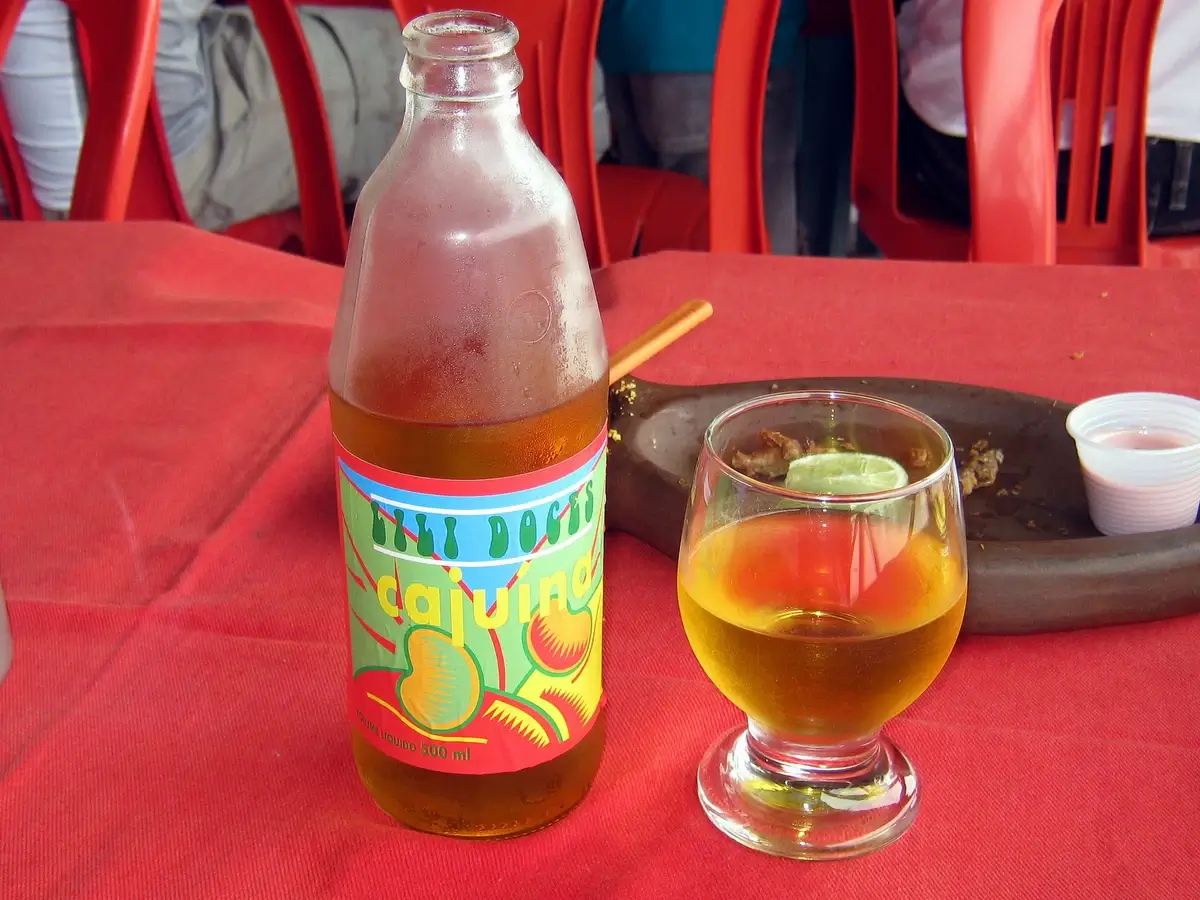
A.Man.From.Earth / Flickr
10. Nutty Power: Health Benefits of Cashew Nuts
While cashews are a delicious snack, they’re also a health dynamo. They’re packed with monounsaturated and polyunsaturated fats, which can promote heart health. These nuts also play a role in reducing LDL cholesterol, often dubbed the ‘bad cholesterol’.
Research has suggested that the compounds in cashews can be beneficial for blood sugar control, making them a recommended snack for diabetics. Plus, with a solid dose of copper, they play a role in many physiological processes including iron utilization and elimination of free radicals. Nutty power indeed!
11. Protection First: The Hard Shell Defense Mechanism
Nature equipped cashews with an impressive defense system: a hard shell filled with a toxic resin. This resin contains urushiol, a substance notorious for causing skin irritations. This shell is nature’s way of protecting the seed, ensuring its survival and reducing its appeal to potential predators.
It’s this defense mechanism that mandates the thorough processing of cashews before they hit the shelves. The shells are removed with care, ensuring the toxic resin doesn’t contaminate the edible seed inside. A reminder that nature always has its protective measures in place!
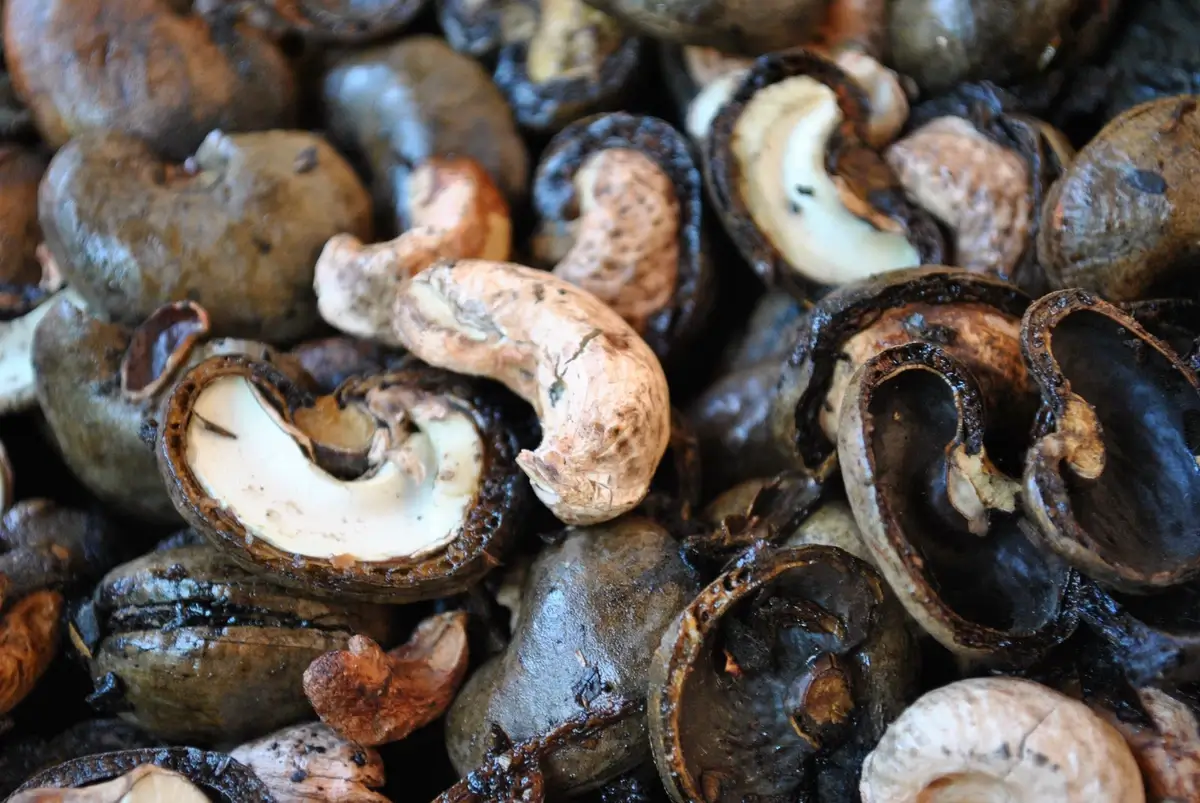
Image: formnutrition.com
12. Cashew’s Footprint in Vegan Cuisine
The vegan world owes a big ‘Thank You’ to the humble cashew. Ever tried vegan cheese or dairy-free ice cream and wondered about its creamy texture? Well, cashews are the secret star. Due to their soft consistency when soaked and blended, cashews become a base for various dairy-free delicacies.
In recent years, especially with the surge in plant-based diets, cashew-based recipes have skyrocketed. From creamy pastas to velvety desserts, cashews provide vegans a rich and diverse culinary palette without compromising on texture or flavor.
13. Cashew Pioneers: The United States’ Role in Processing
The United States, while not a major grower of cashews, played a pioneering role in their processing. In the early 20th century, American entrepreneurs introduced innovative machinery, elevating the efficiency and safety of cashew processing.
The mechanization not only boosted production rates but also ensured better quality and hygiene. While the US admired cashews primarily as a delicious snack, its contribution to processing technology is an unsung chapter in the cashew chronicles.
14. Cashew’s Famous Sibling: Relation to Poison Ivy
Here’s a fascinating fact that might raise eyebrows: cashews and poison ivy are botanical cousins! Both belong to the Anacardiaceae family. This connection might explain the toxic resin in the cashew shell, which contains urushiol – the same irritant found in poison ivy.
But, fear not! The edible part of the cashew is entirely safe to consume. Nature, with its intricate web of relationships, often throws in these surprising familial ties, making the world of botany a ceaseless wonder.
15. Around the World: Global Love for Cashews
Cashews, originally from Brazil, have managed to woo palates across the world. From the curry pots of India to the salad bowls of Australia, they’ve seamlessly integrated into diverse cuisines. The Chinese treasure them in their festive mooncakes, while in the Middle East, they grace pilafs and desserts.
Their universal appeal lies in their buttery texture and subtle taste, which makes them versatile culinary comrades. A testament to the saying, “Food knows no boundaries.”
16. Economic Powerhouse: Cashews in the Global Market
It might surprise you to know that the global cashew industry is worth over $12 billion! The 2020s saw an exponential rise in cashew demand, largely driven by health-conscious consumers worldwide. India alone processes about 1.3 million metric tons of cashews annually. But here’s a historical twist: Vietnam, in less than three decades, transformed from a minor player to the world’s largest exporter, pushing past many traditional leaders.
This nut isn’t just for munching; it’s shaping global economies, supporting millions of jobs, and even influencing trade policies.
17. A Nutty Process: How Cashews Get to Your Plate
Ever wondered about the voyage of cashews from tree to table? It’s a meticulous process! Post-harvest, cashews undergo drying to remove moisture. The next step is the daunting task of shell removal, where workers ensure the inner nut remains uncontaminated by the toxic outer resin.
Roasting and salting follow, which not only enhance flavor but also extend shelf life. This multi-stage process is a testament to the labor and precision behind every bite of this delectable nut.
18. Cashew Cultural Trivia: Its Place in World Cultures
The love for cashews isn’t limited to culinary spaces; it spills over into cultural traditions too. In parts of India, cashews find their way into festive offerings, symbolizing prosperity. In Vietnam, they’re often gifted during Tết, the lunar new year, as a gesture of good fortune.
The nut’s influence extends to folklore and local tales where it often embodies themes of bounty and well-being. A simple snack, yet deeply rooted in the cultural fabric of many societies!
19. Cashew’s Artistic Side: Its Presence in Literature and Art
Cashews have gracefully danced through pages of literature and canvases of art. Famous 20th-century poets have alluded to their unique shape, likening it to life’s twists and turns. In the realm of visual arts, the iconic Brazilian artist Adriana Varejão employed cashews in her artworks, symbolizing native traditions and colonial histories.
Even beyond explicit representation, the essence of cashews, symbolizing nourishment and nature’s marvel, permeates through various artistic expressions.
20. Cashew’s Covert Carbon Fighter Role: The Environmental Impact
Amid growing concerns over climate change, a silent warrior emerges from the unlikeliest of sources: the cashew tree. Research from 2017 indicated that cashew plantations, especially in African regions, play a significant role in carbon sequestration, a natural process of capturing and storing atmospheric carbon dioxide.
These trees, over their lifetime, can sequester a substantial amount of CO2. For instance, a mature cashew tree can absorb up to 22 kg of CO2 annually. Multiply that with the vast stretches of cashew plantations across the world, and you’ve got an army combating global warming!
FAQ
Why eat 4 cashews a day?
Consuming just 4 cashews a day can provide you with numerous health benefits. Cashews are rich in vitamins, minerals, and antioxidants. These include vitamins E, K, and B6, along with minerals like copper, phosphorus, zinc, magnesium, iron, and selenium. Notably, cashews are packed with heart-healthy fats that can aid in reducing bad cholesterol and can increase good cholesterol. They are also believed to help in weight management, boost bone and oral health, and reduce the risk of diabetes.
Can I eat 20 cashews a day?
Yes, you can eat 20 cashews a day. However, moderation is key. While cashews are filled with essential nutrients, they are also calorie-dense. A serving of around 20 cashews would approximately contain 157 calories. Overconsumption can lead to weight gain if not balanced with physical activity. As with all foods, it’s crucial to consume cashews as part of a varied and balanced diet.
Why are cashews called cashews?
The word “cashew” originates from the Portuguese word “caju,” which itself is derived from the indigenous Tupi name “acajú.” The term made its way into English through a series of translations and cultural interactions, reflecting the nut’s global journey and historical trading routes.
Why do cashews have a hole?
Indeed, cashews have a small indentation or a hole-like feature on their underside. This characteristic is an outcome of how the cashew seed develops and attaches itself to the cashew apple. As the seed forms beneath the cashew apple, it naturally develops this small cavity. It’s essentially the spot where the cashew was connected to its fruit, the cashew apple. Over time, as the cashew matures and detaches, this little marking remains, giving the cashew its distinctive appearance.
Why are cashews a Superfood?
Cashews are often considered a superfood because they pack a nutritional punch. They are rich in vitamins, minerals, and beneficial plant compounds that can enhance health. Cashews contain heart-healthy fats, protein, and fiber, making them excellent for heart health, weight management, and overall well-being. Moreover, they contain powerful antioxidants that combat oxidative stress, potentially reducing the risk of chronic diseases.
Who eats the most cashews?
The United States holds the title for being the largest consumer of cashew nuts globally. The demand is driven by its population’s preference for healthy snacking options and the versatility of cashews in various American recipes and cuisines.
Why are cashews never sold in the shell?
Cashews are never sold in their shells because the shell contains urushiol, a toxic resin. When touched, this substance can cause skin irritation or even severe allergic reactions, similar to poison ivy. To protect consumers, cashews are shelled in a process that ensures no traces of urushiol remain on the nut.
Why do people like cashews so much?
People love cashews for their creamy texture and buttery taste. Their unique flavor profile makes them a favorite for snacking, cooking, and baking. Plus, their nutritional benefits, like being a good source of heart-healthy fats and essential vitamins, add to their appeal.
Why can’t you bite a raw cashew?
You can’t safely bite into a truly raw cashew because it contains harmful chemicals. While the cashew seed inside is safe to eat once properly processed, the raw outer shell contains urushiol, a resin that can cause skin rashes and can be toxic when ingested.
Are cashews a nut or a fruit?
Technically, cashews are seeds. The part we eat is the seed of the cashew apple. While we often refer to them as nuts in a culinary context, botanically speaking, they aren’t true nuts. The cashew apple, from which the cashew seed hangs, is the fruit. In some parts of the world, the cashew apple is also consumed, either eaten fresh or used to produce beverages.


